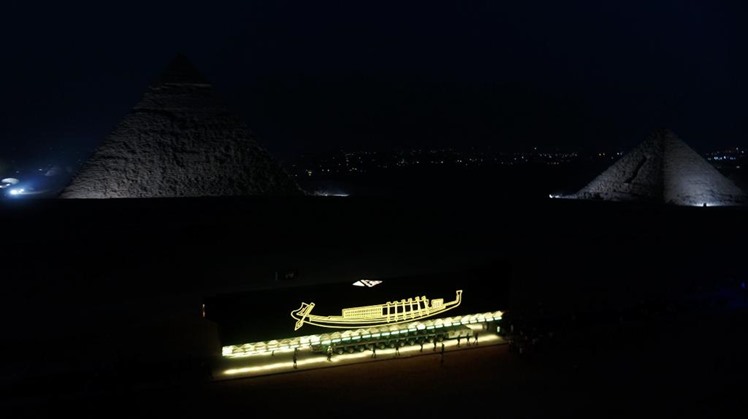The work of moving the Khufu boat from the front of the southern side of the Great Pyramid was carried out in a distinct engineering way, to preserve the antiquities, and it was installed with great success in its permanent display in the Grand Egyptian Museum, so we review the story of the boat since it was discovered.
The story of the boat dates back to May 26, 1954 AD.
- The journalist and writer Kamal al-Malakh announced two pits for the boats of King Khufu "2551-2528 BC".
The two pits of Khufu are located to the south of his Great Pyramid and to the east of its southern side.
Excavation of two pits for two boats covered with blocks of good limestone.
The first crater, located southeast of the Great Pyramid, on which Kamal al-Malakh found forty-one huge blocks.
Huge blocks of good quality limestone extracted from the royal quarries of Tora.
The pit is about 31.2 m long, 2.6 m wide, and 3.5 m deep.
Inside the excavation, a large wooden boat was found, disassembled into about 1224 pieces of cedar wood coming from Lebanon.
The compound is placed very carefully in 13 layers in their original places.
Large quantities of ropes, mats, and oars were also found.
This discovery sparked a global storm of interest that astounded the world.
It was called the Sun Boat, and Kamal Al-Malakh and Ahmed Youssef worked on discovering, restoring and reinstalling the first boat.
The first Khufu boat came out to light after it stayed in the ground for nearly 5000 years.
The first Khufu boat was restored by the Egyptian restorer, Ahmed Youssef.
Ahmed Youssef was able to restore it to what it was in the days of the Pharaohs.
The length of the boat is 43.4 m, its maximum width is 5.9 m, its depth is 1.78 m, its papyrus-shaped front height is 6 m, and its stern is 7 m high.
The boat contains ten oars:
Five on each side, their lengths vary between 6.5 and 8.5 m.
.. a main cabin, advanced by the captain's cabin in the front of the boat.
The rudder is two large oars.
The boat weighs about 45 tons.
The ancient Egyptian used the "lover and lover" method.
Ropes were used to form the parts of this large compound.
Ropes were used so that not a single metal nail was used in the manufacture of this compound.
 Wed, Aug. 11, 2021
Wed, Aug. 11, 2021